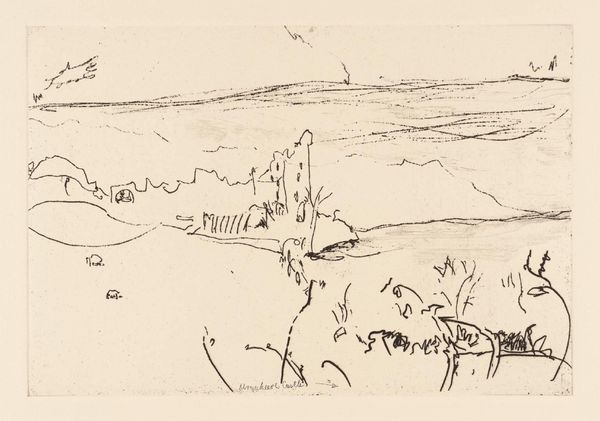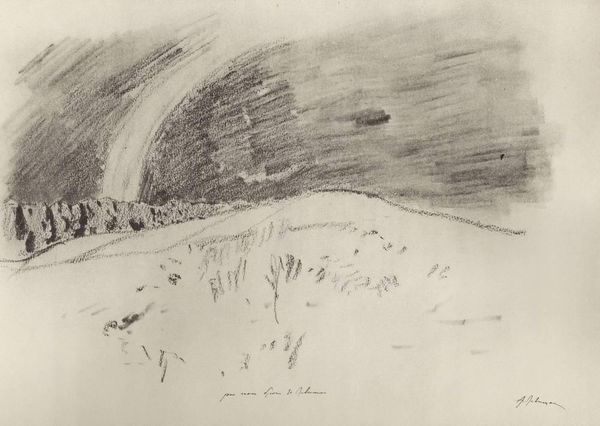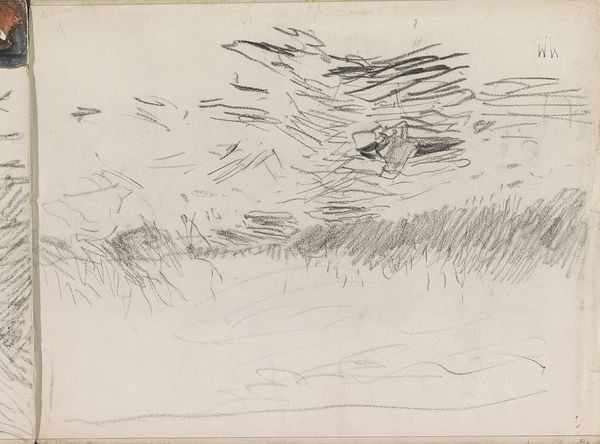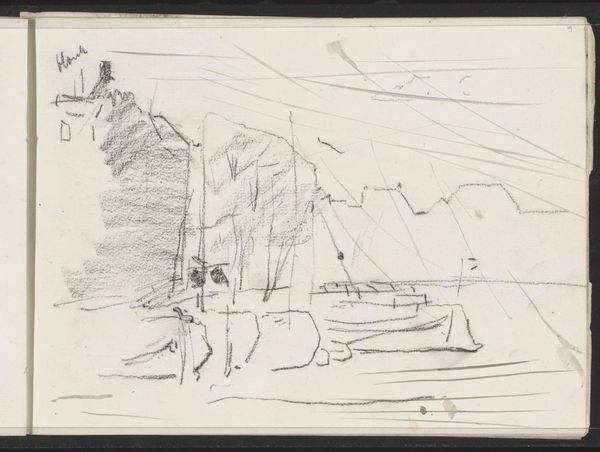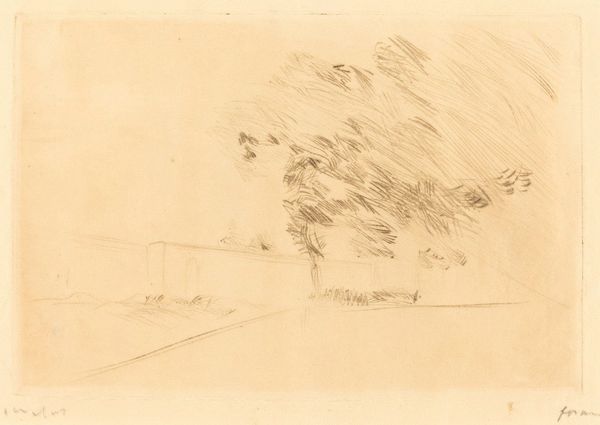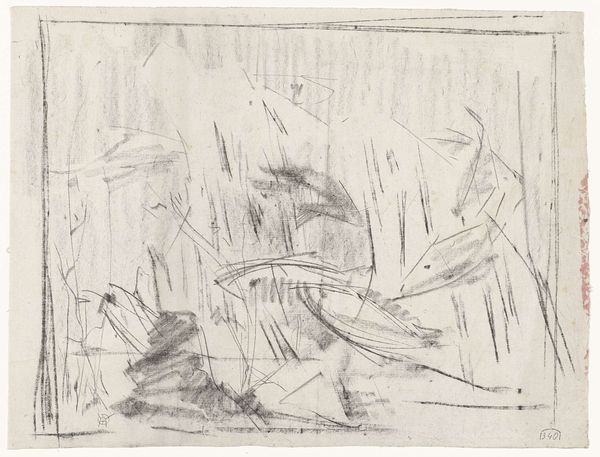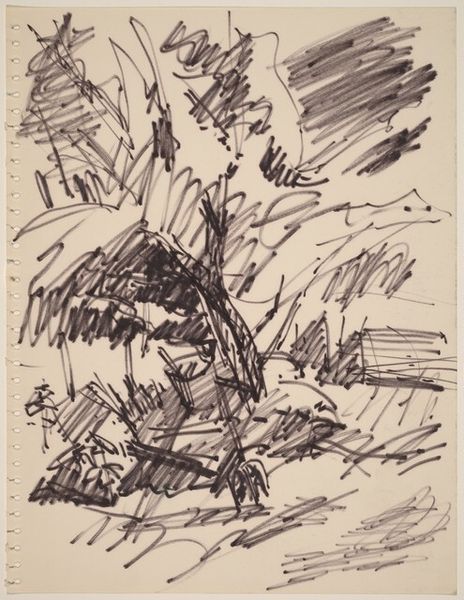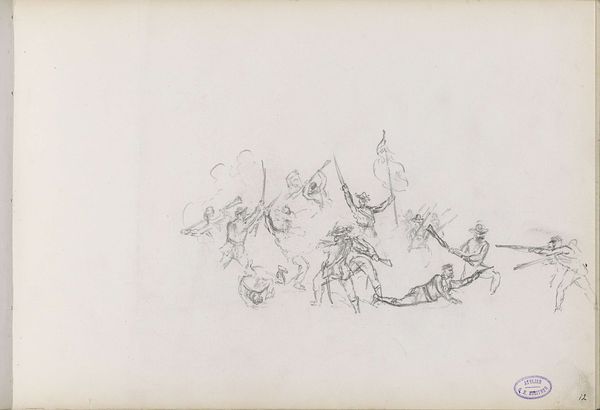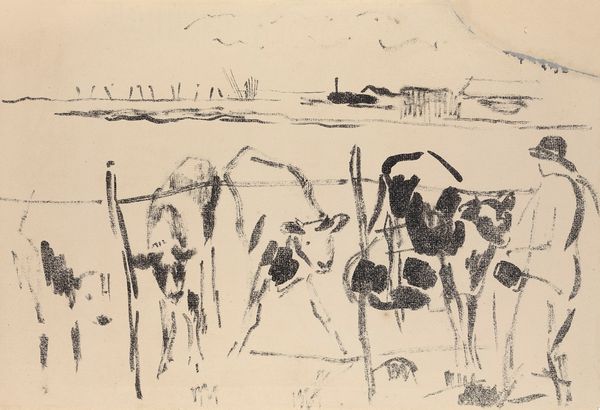
drawing, ink, pen
#
drawing
#
pen sketch
#
landscape
#
figuration
#
ink
#
pen-ink sketch
#
symbolism
#
pen
Dimensions: height 420 mm, width 288 mm
Copyright: Rijks Museum: Open Domain
Curator: Let's take a closer look at this pen and ink drawing attributed to Rik Wouters, titled "Leger dat op een lichaam op een weg stuit", which roughly translates to "Army Stumbling Upon a Body on a Road." The artwork’s creation period is noted as between 1892 and 1916. What strikes you first? Editor: Immediately, I'm struck by the stark contrast between the lightness of the sky and the darkness accumulating on the road. The entire scene possesses a sort of grim foreboding that the sketch attempts to offset by only hinting at any sense of the macabre. It refuses direct visibility, but this also fails. It feels heavy, somber, unsettling, like an unspoken indictment of something… Curator: Precisely. Consider how Wouters uses the swift strokes of ink to convey a sense of urgency. There is something here to unpack about the balance between figuration and landscape. Note the abstract quality given to both. The human form is broken, distorted, whereas the landscape becomes similarly unstable to create a world of disquiet. Editor: The use of negative space really accentuates the scene's desolation. Are we meant to question the social responsibility that has led to the fallen figures represented? Are we observing the devastating impact of military conflict as understood through the artist's lived experience? The date range places this piece right at the peak of World War I. It's impossible to ignore the resonance of potential anti-war sentiment within it. Curator: That is a valid interpretive direction to move towards. We might equally argue that by resisting specificity, he achieves a universality – reflecting the constant human experience of mortality irrespective of a historical location. Also, consider how the recurring diagonal strokes contribute to the unsettling instability that one feels as one looks at the whole picture plane. This seems to create a strong sensation and it works without any other clear referent beyond ink. Editor: While such formal relationships create impact, the choice to depict a fallen body and approaching armed forces in close relation hints at explicit violence. The act of stumbling suggests not only a physical obstruction but also an unexpected moral confrontation—that these figures must also engage with their possible agency or inaction is important for interpreting Wouters. To avoid confronting its politics is to risk depoliticizing the context itself. Curator: You pose some excellent questions. It really underlines how form and context coalesce. Editor: Absolutely, it reminds us of the multilayered depth to this ostensibly simple sketch, making it all the more disturbing and thought-provoking.
Comments
No comments
Be the first to comment and join the conversation on the ultimate creative platform.

